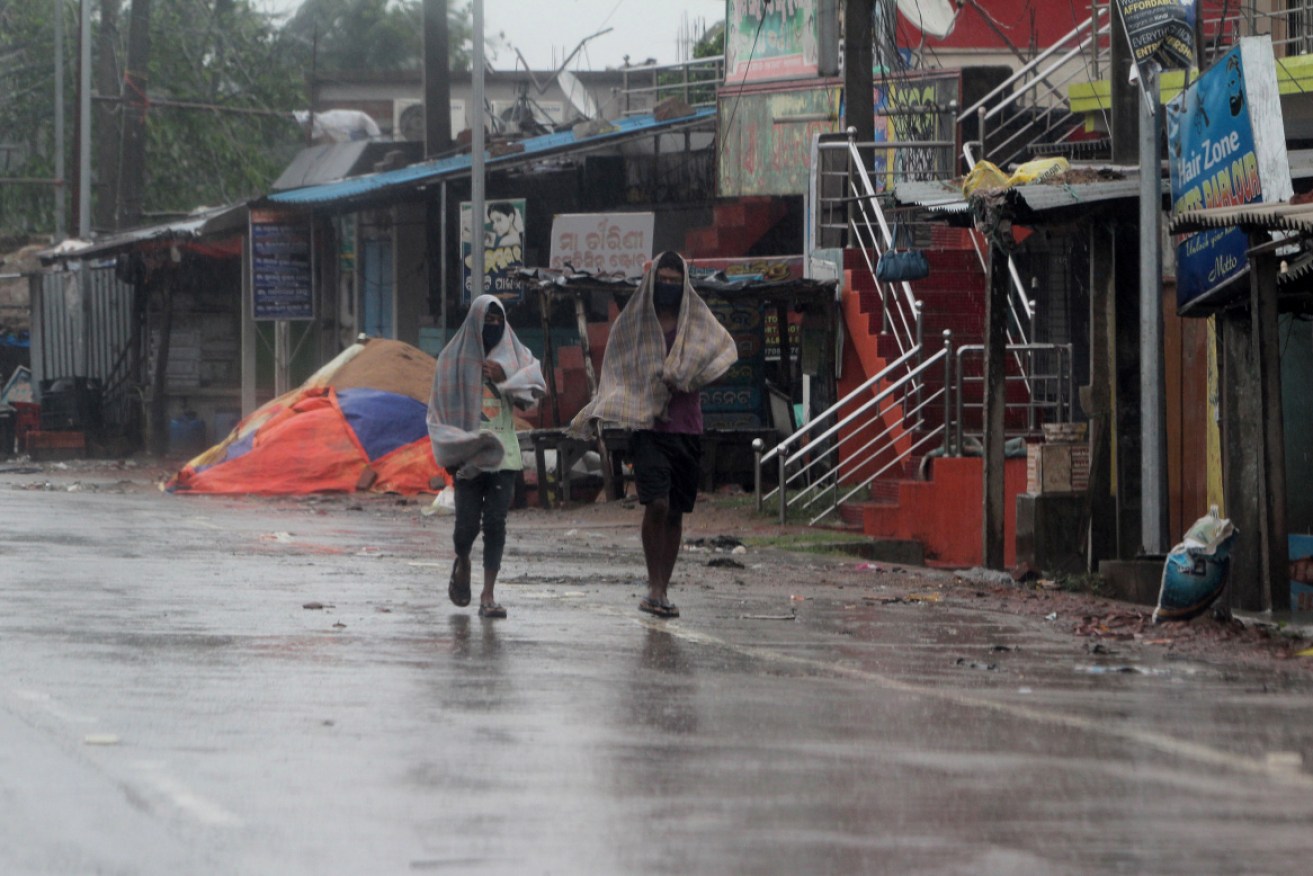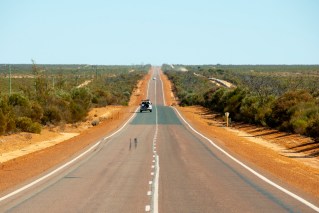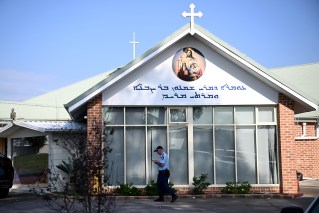Baby, teenager among dead as Cyclone Amphan wreaks havoc in India, Bangladesh


Locals walk in heavy rain and wind as cyclone Amphan approaches the Odisha coast in India on 20 May. Photo: AAP
A teenage girl and a baby are among the victims confirmed dead as “super cyclone” storms smash towns in India and Bangladesh.
Millions of people fled their homes when Cyclone Amphan headed for coastal regions in a mass evacuation made even more difficult by the coronavirus pandemic.
But with the storm pushing sea water as far as 17 kilometres inland and winds of up to 185km/h, it has been near-on impossible for residents to escape the threat.
By Thursday morning, at least 22 people had died as a result of Amphan. Millions were without power and it’s feared many will be left homeless.
While the region is often hit by cyclones at this time of year, the storm is the first super cyclone to form in the Bay of Bengal in more than 20 years.
The damage has been colossal, authorities said, as they warned of mudslides and stressed the storm was not over.
Three Bangladesh islands, where more than 50,000 people live, were inundated by a tidal surge. Back on the mainland and in India, residents hunkering down at home were under threat as winds ripped off roofs and toppled electricity poles.
My heart is breaking for India and Bangladesh today as Cyclone Amphan makes landfall.
This is the story of the climate emergency over and over and over again: The most marginalized people in the world are bearing the brunt of the worst impacts.
This is such cruel injustice 💔 pic.twitter.com/2FD2X7OEzM
— Eric Holthaus (@EricHolthaus) May 20, 2020
In Bangladesh, a 70-year-old man died after a tree fell on him in the southern island district of Bhola, government official Zaynal Abedin said.
Two people died in Basirhat in the North 24 Parganas district of West Bengal after trees fell on them during the storm, an official at the district disaster control room said.
A 13-year-old girl died after being struck by a tin roof in Howrah district, local media reported.
In neighbouring Odisha state, disaster management chief PK Jena said they had received reports that a three-month-old baby had died in a wall collapse.

An ominous sky as the storm from super Cyclone Amphan. Photo: AAP
Seek shelter and risk virus
The regions hit by the cyclone are home to some of the most vulnerable communities in southern Asia: Poor fishing communities in the Sunderbans and more than a million Rohingya refugees living in the crowded camps in Cox’s Bazar in Bangladesh.
Evacuations in the densely populated region are difficult at the best of times, but became chaotic in some areas as a result of the coronavirus pandemic.
Shelters were crowded and it was impossible to maintain social distancing. Residents were forced to choose between taking refuge from the storm or staying home to face it to avoid the risk of coronavirus.
Masks and hand sanitisers were hastily added to emergency items in shelters.
Sobrato Das, a fisherman in Mousuni Island in India, close to the Sunderbans, described the shelters as crowded and said “very few people are wearing masks”.
#Kendrapara district in Odisha today where heavy winds & seawater inundation witnessed in few areas along the coast due to #CycloneAmphan #CycloneAmphanUpdate pic.twitter.com/TBRttHOlnf
— Odialive (@OdiaLive) May 20, 2020
He said children were crying and women desperately tried to cover their faces with their saris while trying to maintain some distance from each other.
“I have left all my belongings in my house and hope it doesn’t get washed away in the floods,” Mr Das said.
The combination of the coronavirus and cyclone could lead to a “new humanitarian crisis”, said Manuel Pereira, deputy chief of mission for the International Organisation for Migration in Bangladesh.
“We know that if people are forced to seek communal shelter, they’ll be unable to maintain physical distancing and run the risk of contracting or transmitting the virus,” he said.
-with AAP








